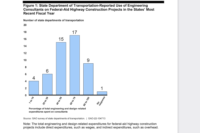
The cost of the Dept. of Defense's 2005 base closure round has ended up much higher than planners initially estimated. Increased construction expenses were the major factor, says a Government Accountability Office report.
The GAO study, released on June 29, says the 2005 Base Realignment and Closure (BRAC) commission estimated the program's construction and other up-front costs at $21 billion. But in 2011, the 2005 round's final year, DOD pegged those costs at $35.1 billion.
Construction costs were the main culprit, soaring to $24.5 billion in 2011 from the $13.2-billion 2005 estimate. That construction increase equaled 80% of the 2005 BRAC program's overall hike over the six-year span. GAO's report also says the construction cost for the four earlier BRAC rounds combined was $7 billion.
Additions to projects' scope were the prime reason for the higher construction tab. GAO says, "Military construction costs increased because, after implementation began, DOD identified requirements for new construction projects as well as for additions to planned construction projects, which were not accounted for in the original cost estimates."
Increases on just 14 of the 2005 round's 182 recommendations accounted for $10.2 billion, or 72%, of the round's total six-year hike.
The largest increase, at more than $1.7 billion, occurred in the plan to reshape the military hospital presence in the Washington, D.C., area. The blueprint included closing the Walter Reed Army Medical Center in Washington, expanding the nearby Bethesda National Naval Medical Center in Maryland and building a new community hospital at Fort Belvoir in northern Virginia.
GAO says one reason why costs jumped on that set of projects was an advisory panel's 2009 recommendation that the enlarged Bethesda hospital and new Fort Belvoir facility should be "world-class" hospitals. DOD altered its 2005 plan to carry out that recommendation.
The cost of the plan to shut Fort Monmouth in New Jersey and move its functions to other posts also leaped. GAO says, "Further analysis of mission requirements by the Army after [BRAC] implementation began" led to about 750,000 sq ft of additional construction at Maryland's Aberdeen Proving Ground, to which a major part of Fort Monmouth's operations were transferred.
Other reasons for the BRAC round's higher price tag include construction-materials inflation and higher-than-predicted environmental-cleanup expenses. GAO says the hike in construction and other up-front expenses will slice DOD's 20-year savings from the 2005 round to $9.9 billion, from the $35.6 billion the BRAC commission had estimated.
DOD Still Favors BRAC
For several years, GAO and DOD have been reporting that BRAC costs had climbed. Dorothy Robyn, DOD deputy undersecretary for installations and environment, said GAO's study "accurately describes" the changes in costs and savings from 2005 to 2011. Robyn added that DOD "continues to believe that the BRAC process is the only fair, objective and proven process for closing and realigning bases in the United States."
Early this year, DOD Secretary Leon Panetta proposed two more BRAC rounds, but Congress has not embraced that idea.



Post a comment to this article
Report Abusive Comment